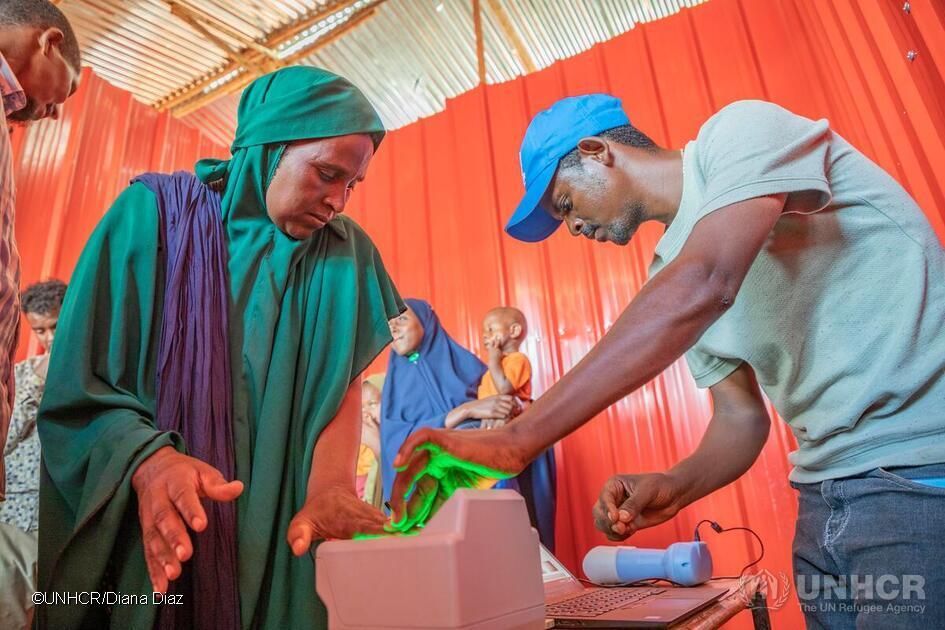


Digital humanitarians: the ITHACA project
By Heather Faulkner “When you depart for Ithaca, may your road be a long one, full of adventure and full of knowledge.” The opening lines of Constantine P. Cavafy’s 1911 poem, “Ithaca”, have served as inspiration to the 11 partner institutions,1 working together since...
Safeguarding refugee rights in business
In a world where over 120 million people have been forced to flee because of violence, conflict, persecution and increasingly climate-related emergencies, businesses have a unique and vital role to play in safeguarding the human rights of forcibly displaced people.
UNHCR’s Engagement in Situations of Internal Displacement: Progress, Challenges, and the Road Ahead
Internal displacement globally has grown by over 110% in the past decade and is anticipated to double again by 2030. UNHCR commissioned a strategic thematic evaluation of its engagement in internal displacement situations, with the aim of generating evidence to...
Archiving a Cherished Chapter: Celebrating Montserrat’s Retirement at UNHCR
By Motahareh Mohebi[1] “She balances creativity and a positive “can-do” attitude so perfectly.” “Always ambitious and never taking no for an answer.” “Visionnaire, enthousiaste, intelligente, instruite, courageuse, persuasive, positive et tenace, elle a su...
Biometrics innovation: Transforming the way we collect fingerprints at UNHCR
In 2002, UNHCR introduced biometrics, and leveraged the technology to manage the identity of the people it serves effectively. By capturing up to 10 fingerprints, 2 irises and a face photo during the initial encounter, biometrics play a crucial role from confirming an individual’s physical presence to providing assistance. UNHCR’s Biometric Identity Management System (BIMS) serves a diverse user base including UNHCR staff, partners, governments, and soon refugees themselves through self-service applications, all in a user-friendly manner. While BIMS has undergone countless improvements throughout the years, the biometric scanner devices used have remained largely unchanged.

The Microdata Library in 2023: furthering the commitment to the responsible sharing of microdata
Razan and other volunteers train for data collection ahead of aid distributions. ; The conflict that erupted in April in Sudan has displaced millions of Sudanese. Many of them are sheltering in Wadi Halfa, hoping to be allowed to enter Egypt. © UNHCR/Mohamed Rached...UNHCR’s Humanitarian-Development Cooperation: Progress, Challenges, and the Road Ahead
In an era marked by increasing global displacement, the United Nations High Commissioner for Refugees’ Evaluation office (UNHCR) has undertaken an evaluation of its engagement in humanitarian-development cooperation. Building upon the findings of the original...Beyond Basics: Elevating Refugee Education to New Heights on International Day of Education 2024
Enhakole fled Rwanda in 2010 with her mother and siblings to seek refuge in Uganda. Born with a visual impairment, she received support from Educate a Child and UNHCR and completed her primary education. She now attends secondary school with the dream of becoming a...
The Power of Now: Nowcasting Refugee Population Figures at UNHCR
UNHCR developed a Nowcasting dashboard to provide an estimate of actual forced displacement figures when official figures are unavailable with an accuracy of close to 99% compared to officially published figures at the global level. These nowcasts are incredibly important in the humanitarian sector as they inform UNHCR and its partners of the rapidly changing situation in almost real-time and enable more efficient decision-making such as emergency resource allocation.
